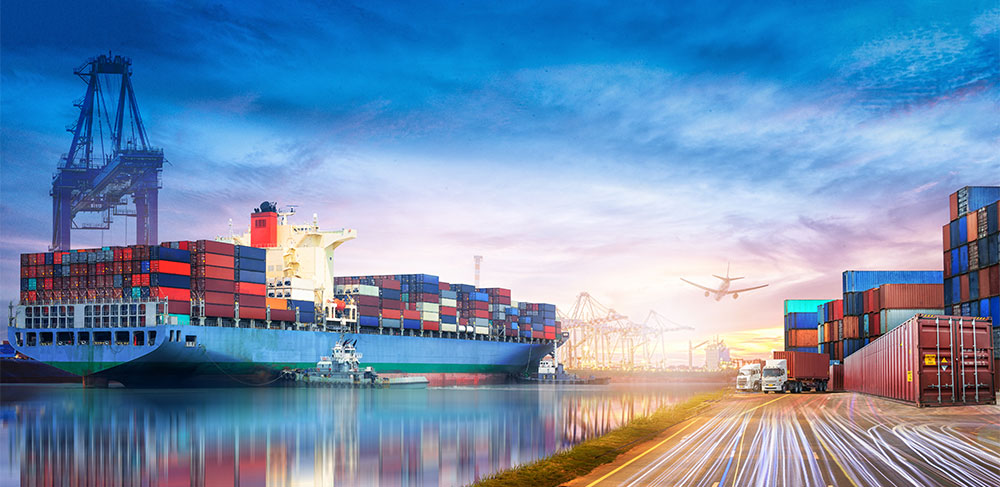
With supply chain disruptions occupying headlines since the onset of the pandemic, many multinational organizations have found themselves retooling their operations to be more resilient. In and of itself, this is no easy task, typically involving decisions that go beyond simple logistics into questions related to the costs of staffing and training in different countries, as well as issues related to taxation, transfer pricing, and regulatory compliance.
Against that backdrop, organizations are also contending with both local and global shifts in taxation and transfer pricing regulation. While these shifts should result in a simpler system over time, the immediate to medium-term future is significantly more complicated–particularly with those additional supply chain considerations in mind.
To get a sense of how organizations are dealing with tax and transfer pricing challenges, Carpe Diem recently performed a market scan of senior-level executives with strong operational experience in compliance across global tax structures, and international experience in transfer pricing– in businesses with revenues of $2-$10 billion. Throughout these conversations, a number of key points emerged.
Supply Chain Impact on Transfer Pricing

While the commentary around supply chain disruptions has been mostly negative, one executive noted that they also present a silver lining: “rare opportunities for CFOs and their finance teams to re-evaluate their transfer pricing approaches, and capture the value of adjusted priorities in areas such as procurement and risk management.” Although that positive tone wasn’t always echoed by other leaders, most did tend to agree on the need to re-evaluate priorities and risks to the entire business. As another executive noted, “Multinational firms now need to consider the operational risk profiles and where they generate their profit across all aspects of their supply chain, which may drive changes to intercompany pricing models, and the associated tax treatment.”
A third leader pointed specifically to the need to consider additional stakeholders:
Ensuring transforming supply chain strategies become more resilient and collaborative with customers, suppliers and other stakeholders will actually help in the transfer pricing challenges is imperative. As supply chains become disrupted, companies will modify their operating models to drive efficiency but also cost optimization and transparency. The impact on transfer pricing is to break the status quo as the impact of these will alter existing financial agreements and arrangements within countries and associated tax jurisdictions increasing both risk and altering tax remuneration structures.”
Compliance

Avoiding costs associated with lack of compliance–whether unintentional or otherwise–was a critical concern for most of the leaders we connected with. One noted that “Compliance is our primary focus. [We’re] not scared of paying taxes; we won’t embarrass the company or be aggressive with tax planning. Always looking to optimize tax but not at the expense of business operational continuity.”
“Our ultimate goal is to move the profit or loss to whoever owns the IP,” noted another. “Transfer pricing has a general top and bottom range. We want consistency in the transfer pricing policy. Consistency on profit or loss that is left in the different locations is easier to defend in audits. Margin has to go to where the IP is held.”
Significant strategy and planning work must ensure we recognize profits in the correct areas, and won’t disrupt the business. It takes lots of collaboration and discussion to ensure the businesses are aware in different situations; M&A and replanning to name a few.
Outsourcing

Given the difficulty of ensuring compliance within large global organizations, many companies are turning to outsourcing the transfer pricing function. “Having a global footprint makes compliance very hard,” one leader noted. “Tax outsourcing is a growing area in the transfer pricing space just given the complexity of the current landscape. Extensive documentation and OECD developments that will be required annually – very daunting along with investments with the right technology to drive compliance. Having this capability outsourced leverages the global strength of external firms whose main focus is on compliance. Looks like more reporting and more disclosures will be a trend that won’t end for a while.”
“All expertise in Transfer pricing is now being outsourced,” said another. “Our firm simply cannot maintain statutory and regulatory compliance with all the evolving regulations and changes” across a broad global footprint.
Other companies are developing their own solutions, including in-house specialists for US-based transactions, and external experts for overseas locations.
One leader noted that:
Using a policy transfer pricing person and aligning them with a tax person is a good model as it can also speak to the accounting rules, controls and compliance and also work with IT to drive systems controls and automation.”
Conclusions
While the wider taxation and transfer pricing picture remains in flux, leaders are not waiting for a final system to emerge before acting. By working to solidify where value creation occurs in the supply chain and take pains to ensure compliance–either through outsourcing or expert in-house talent paired with sophisticated tech–most executives are keeping their focus on building robust organizational processes that will enable their companies to thrive regardless of the final outcome of the current upheaval.


These market insights from Carpe Diem Global Partners are gathered from the firm’s extensive client work leading Board, CEO, CXO, and CHRO executive search engagements for public and private multinational companies. For deeper, custom insights, contact Michael Whitehead at mwhitehead@carpediempartners.com.

